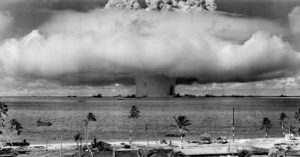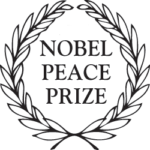Climate change multiplies the potential for conflict over resources such as land, drinking water and food reserves, and increases the pressure to migrate. Political collapse, in turn, leads to extremist leaders gaining control over nuclear weapons, which poses a risk in regions where there already is political tension.
– Dr. Carlos Umaña, IPPNW Co-President

Among the many crises in the world, two man-made hazards threaten the very existence of humankind: 1) the ongoing and accelerating global climate crisis and 2) the growing threat of nuclear war.
There are many important links between the two crises: Both can crash the global climate. The climate crisis is already having clear adverse effects on health, the environment, and peace and security. On the other hand, nuclear weapons are a climate crisis waiting. While it was established during the Cold War that all-out nuclear war could cause a “nuclear winter,” new evidence by IPPNW Co-President, Dr. Ira Helfand, suggests that even a relatively “minor” exchange of nuclear weapons, such as between India and Pakistan, could crash the global climate by lofting massive amounts of soot into the stratosphere, causing a global cooling.
Moreover, one threat exacerbates the other: continued global warming is expected to cause mass human migration and competition for increasingly scarce resources, leading to a spiral of conflict, violence and war, including among nuclear-armed states. Both issues are a fight for human and planetary survival that require a mobilized global citizenry pressing for urgent action to cut greenhouse gas emissions and to ban and eliminate nuclear weapons.
However, whereas climate change is a top-level public concern, nuclear weapons receive very little attention. Even with demonstrably unprincipled and ill-equipped leaders in command of these omnicidal weapons, the grave, immediate threat they pose remains beneath public notice. Today’s youth are rarely educated about the true nature of nuclear weapons and are, in general, unaware of their clear and present danger. If anything, young people are taught that the use of nuclear weapons ended World War 2, the former Soviet Union and U.S. had a nuclear arms race, and with the fall of the Berlin Wall, all of that is behind us. This must change.
Today’s youth not only understand the scientific causes and effects of the runaway climate crisis, but also many are engaged in pushing for solutions. Once given information on the current realities of nuclear weapons, young people have proven that it is a lack of knowledge, not a lack of will, preventing them from joining the movement to abolish nuclear weapons.
Our aim is to help unite more young people in urgent common cause to eliminate the twin existential threats of the climate crisis and nuclear war.
Learn more about IPPNW’s youth initiative, YEPE, here.
Resources:
Nuclear Famine: Two Billion People at Risk?, Dr. Ira Helfand, IPPNW Co-President, 2013
Nuclear Weapons and Climate Change, Dr. Carlos Umaña, IPPNW Regional Vice President, 2019
Nuclear Weapons and Our Climate, ICAN Australia, 2019
Warheads to Windmills: How to Pay for a Green New Deal, Timmon Wallis PhD, NuclearBan.US, 2019
Self-assured destruction: The climate impacts of nuclear war, Alan Robock and Owen Brian Toon, 2012

